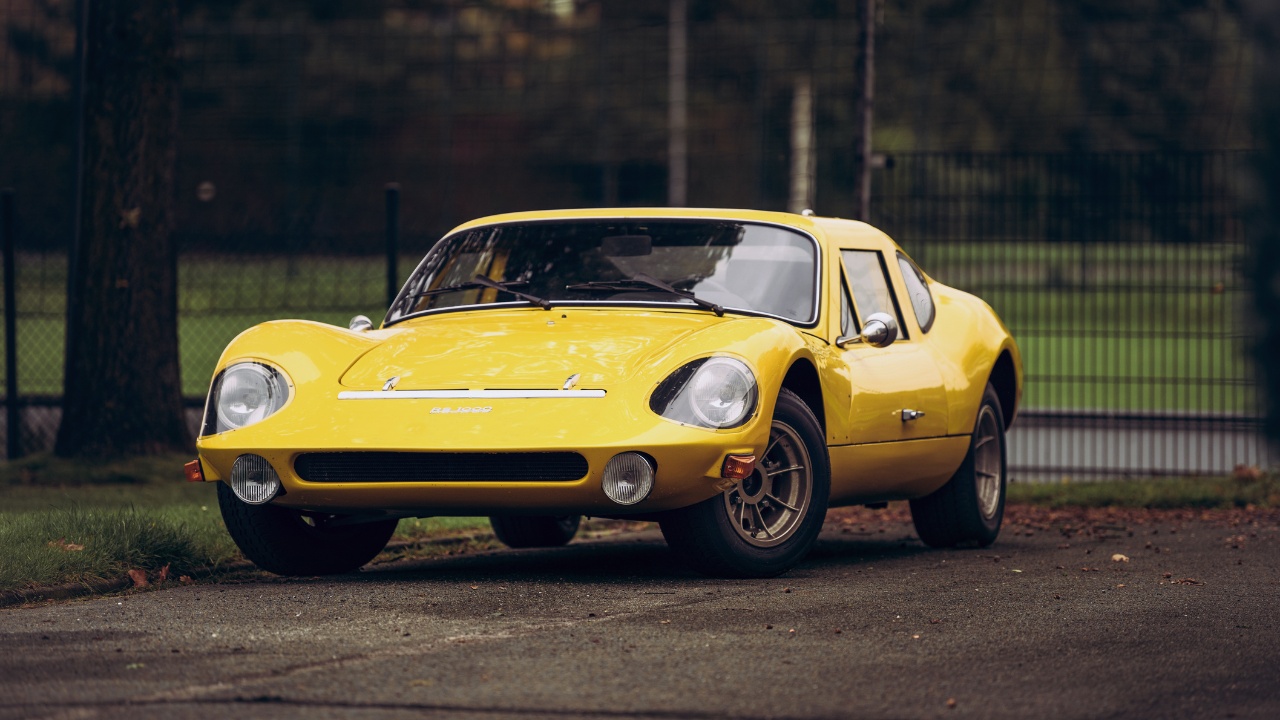13 Beautiful Sports Cars You’ve Probably Never Heard Of

When asked to name the most beautiful sports cars ever made, most gearheads mention cars like the iconic Jaguar E-Type, 1963 Chevrolet Corvette Sting Ray, Lamborghini Miura, Ferrari 250 GTO, and other mainstream options.
However, there are many drop-dead-gorgeous sports cars that most gearheads still don’t know about.
These beauties have stayed off the radar for various reasons, including poor marketing, low production numbers, and the fact that many of them were built by little-known companies that may not be in business today.
This list puts a spotlight on obscure sports cars that deserve more recognition thanks to their sheer beauty.
Spyker C8

The Dutch are known for producing tulips, beer, and bicycles – not cars. However, Spyker Cars decided to change that by building one of the most beautiful European sports cars. Dubbed the C8, this little-known mid-engined marvel has been around since the turn of the century and is now in its third generation.
The third-generation C8 — the Preliator — debuted in 2016 with a highly detailed design featuring several aircraft-inspired elements. It has a curvy design featuring a retro-inspired radiator grille, scissor doors, NACA ducts and ailerons that improve aerodynamics, and 19-inch “Rotorblade” wheels that look like turbine blades of a modern jet engine.
Bizzarrini 5300 GT Strada

Giotto Bizzarrini is a renowned Italian automotive engineer best known for building the best Italian sports car ever—the Ferrari 250 GTO. Bizzarrini had always dreamed of producing sports cars in his name, so after a highly successful stint at Ferrari, he left and established Bizzarrini S.P.A. to do just that.
The best car Bizzarrini ever built is the 5300 GT Strada, and it’s a thing of beauty. It has a low-slung design featuring a long hood, round headlights, and, like the Ferrari 250 GTO, its engine was pushed back as far as possible into the engine bay to aid in weight distribution. At the heart of the 5300 GT Strada was a Chevrolet-sourced 5.4-liter V8, making it a joy to drive.
De Tomaso Mangusta

In 1959, Argentine racing driver and entrepreneur Alejandro de Tomaso established a car manufacturing company in his name to produce racing vehicles and sports prototypes. Several years later, De Tomaso’s ambitions grew, and the company went on to produce luxury cars and sports cars.
The best-known De Tomaso model is the Pantera, but its predecessor was just as good-looking. The Mangusta, as it’s called, had a stunning wedge-shaped design that Giorgetto Giugiaro masterfully created. The Mangusta’s main design highlight was its unique gullwing doors covering the engine and luggage compartments.
Zenvo ST1

When two entrepreneurs got together in the 2000s and established a car manufacturing company called Zenvo Automotive in Denmark, they never imagined that it could one day be competing with the very best in the industry. Zenvo’s first production car was the ST1 in 2009, and it quickly showed everyone that the Danish marque meant business.
The ST1 is a handcrafted marvel with a hypercar-worthy design featuring some cool elements throughout. The front end instantly grabs your attention thanks to angry-looking headlights, Zenvo’s trademark hexagonal grille with large front air intakes on each side, and double-vented hood.
The side profile shows the ST1’s near-perfect proportions while the rear end finishes the look with a rear spoiler and a large rear diffuser. With only 15 made, it’s no surprise why many gearheads still don’t know about the ST1.
Vector W8

In the late ’80s, little-known American carmaker Vector decided to shake up the industry by building a sports car that could compete against the likes of the Lamborghini Countach, Ferrari F40, and other top European sports cars. It all started with the W2 prototype that Vector unveiled in 1978, and over a decade later, Vector introduced the production version — the W8.
Like the W2 prototype, the W8’s design largely drew inspiration from the 1968 Alfa Romeo Carabo concept car, which was widely considered to be one of the most futuristic concept cars of the day.
It had an angular and geometric wedge-shaped design with a low flat front, scissor doors, and a truncated tail with a large rear spoiler. The W8 was also one of the fastest and most beautiful American sports cars of the day, with a top speed of just under 220 mph.
Apollo Intensa Emozione

A few years ago, hypercars used to bring the motoring world to a standstill during their unveiling. That’s no longer the case today. With so many hypercars coming out, it’s harder to keep up, and some don’t get the recognition they deserve. One good example is the Apollo Intensa Emozione, which debuted in 2019 but largely flew under the radar.
At first glance, the Apollo Intensa Emozione’s design exudes an aggressive presence. It has a low-slung profile, sharp angles, wide track, pronounced wheel arches, and sculpted body panels that hint at the raw power lying beneath the skin.
Many of its design elements serve both functional and aesthetic purposes, from the front splitter and large air intakes that direct airflow to critical components to the butterfly doors that make a bold statement and facilitate easy access.
Scuderia Cameron Glickenhaus SCG 003

James Glickenhaus is an American businessman who’s known for having one of the best car collections in the world. Glickenhaus’ collection includes some rare cars and even one-off builds like the Ferrari P4/5 by Pininfarina. Seemingly tired of collecting other companies’ cars, Glickenhaus established Scuderia Cameron Glickenhaus in 2004 to build high-performance cars, and the SCG 003 is the best model to date.
The SCG 003 grabs your attention with its low profile, pointed nose, carbon fiber bits sticking out everywhere, peaked fenders, butterfly doors, and a dorsal fin on the roof. Buyers choose between two engines, the most powerful being a BMW-sourced 4.4-liter twin-turbo V8 dishing out 750-hp.
Iso Grifo

After several decades of living in the shadows, Italian automaker Iso decided to build the ultimate grand tourer that could take on popular offerings from Ferrari and Maserati. Iso hired the renowned Giorgetto Giugiaro to pen the design and Giotto Bizzarrini to work on the mechanicals, resulting in the Iso Grifo.
The Grifo was a headturner that earned Iso respect among gearheads, particularly the sleeker Series II version. It had a long hood, hide-away headlights, a sloping roofline, and short rear overhangs. The Grifo also had some American DNA, as it had a monstrous 7.4-liter Chevy V8 under the hood.
De Tomaso P72

After its founder’s passing in 2003, it didn’t take long for De Tomaso to find itself in trouble, and barely a year later, the company went into liquidation. Since then, the company has exchanged hands several times, and it now belongs to a Hong Kong-based consortium (the same one that produces the Apollo Intensa Emozione). The first car De Tomaso built under its new ownership is the P72, and it’s in a class of its own.
When it comes to retro-inspired designs, not many modern cars have pulled it off better than the P72. The P72 looks like one of those gorgeous Le Mans race cars from the ’60s, which isn’t surprising since its design was inspired by the De Tomaso P70 race car. It has smooth, elegant lines, a curvaceous body with bulging fenders, a top mounted exhaust system, and dihedral doors to add a modern touch to it.
Aspark Owl

In 2017, little-known Japanese automaker Aspark caused huge waves in the auto industry when it unveiled a new electric hypercar it was working on. Known as the Aspark Owl, this fantastic car wowed everyone at the 2017 Frankfurt Auto Show thanks to its low-slung, curvy design and the fact that the company claimed it would be among the fastest cars once production started.
Many gearheads dismissed the Aspark Owl as just another ambitious concept car that would never go into production. However, it now looks like the Owl will soon hit the streets. It recently broke the EV speed record set by the Rimac Nevera, achieving a top speed of 272.6 mph.
Melkus RS 1000

Melkus is a small East German automaker that had a great run in the ’60s but is sadly defunct today. The best car Melkus ever built is the RS 1000. Introduced in 1969, the RS 1000 is a mid-engined sports car that impressed many with its stunning design featuring smooth curves and gullwing doors.
The RS 1000 looked right at home next to gorgeous Italian sports cars, particularly the Alfa Romeo 33 Stradale, which it shared many styling cues with. Unfortunately, the RS 1000 didn’t do justice to its beauty as it only had a 68-hp three-cylinder engine, which is likely why many gearheads don’t know about it.
Rezvani Beast Alpha

Rezvani has a reputation for building some fantastic custom cars, including models like the Jeep Wrangler-based Tank, the Hercules 6×6, and more. Many gearheads don’t know this, but Rezvani also produces a two-door sports car known as the Beast, and it’s really good.
The Rezvani Beast is based on the Ariel Atom, but you’d never know by looking at it as it looks completely different. Unlike the open-top Ariel Atom, the Beast has a proper sports car design and features unique touches like a removable Targa top and unique “sidewinder” doors (they pop to the side and slide forward).
Lamborghini 350 GT

When asked to describe Lamborghini’s design language, most gearheads immediately think of wedge-shaped supercars with aggressive demeanors and sharp lines. However, before the Countach changed everything, Lamborghini used to make beautiful grand tourers with curves in all the right places. A good example is the 350 GT — the automaker’s first-ever production vehicle.
The 350 GT gave Ferraris of the day a run for their money with its elegant proportions, long hood, and sculpted headlights. Powered by a 3.5-liter V12, the 350 GT showed other top Italian automakers that Lamborghini was a serious threat.





